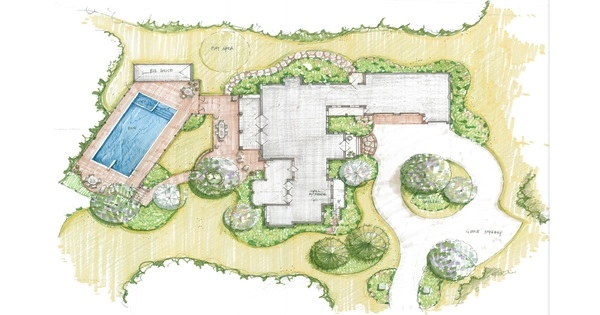Landscape architecture includes landscape planning. It is a multidisciplinary process that involves the systematic organization and design of outdoor areas to achieve specific goals while taking environmental, social, and aesthetic considerations into account. It involves numerous aspects of land use and development with the goal of creating landscapes that are sustainable, useful, and visually appealing.
Landscape planning, as defined by Erv Zube (1931-2002), is an activity concerned with designing landscaping among conflicting land uses while maintaining natural processes and valuable cultural and natural resources. Frederick Law Olmsted’s park systems and greenways are prime examples of landscape planning.
Landscape design can take place at many different scales, ranging from modest residential gardens to huge metropolitan parks or regional planning. Landscape designers are typically hired by clients that want to commission construction work. Landscape designers examine general challenges as well as project characteristics that limit design initiatives.
Landscape planners may work on projects with a vast geographical reach, several land uses or clients, or that take a long time to complete. One of the early motivations for a public need for landscape planning, for example, was the devastation caused by unmanaged mineral mining.
Here are some key components and considerations in landscape planning:
- Site Analysis: The first step in landscape planning involves a thorough analysis of the site. This includes studying the topography, soil conditions, climate, vegetation, existing infrastructure, and any legal or regulatory constraints.
- Goal Setting: Define the goals and objectives of the landscape project. These may include improving biodiversity, creating recreational spaces, enhancing aesthetics, mitigating environmental impacts, or providing space for specific activities.
- Master Planning: Develop a master plan that outlines the overall design and layout of the landscape. This plan will consider the placement of various elements such as pathways, green spaces, water features, and structures.
- Ecological Considerations: Incorporate ecological principles into the design to ensure sustainability. This may involve preserving or restoring natural habitats, selecting native plant species, and implementing sustainable water management practices.
- Functional Design: Ensure that the landscape serves its intended functions effectively. This may involve designing spaces for activities like walking, cycling, picnicking, sports, or wildlife observation.
- Aesthetics: Pay attention to the visual aspects of the landscape, including the use of color, texture, form, and spatial arrangement. Create a visually appealing environment that complements the surrounding area.
- Accessibility: Design with accessibility in mind to accommodate people of all ages and abilities. Ensure that pathways, ramps, and facilities are ADA-compliant.
Environmental Sustainability
Implement sustainable techniques such as water-efficient irrigation systems, energy-efficient lighting, and environmentally friendly materials. Include the community in the planning process to collect feedback and address their needs and concerns. Public involvement can lead to more successful and well-accepted landscape initiatives.
Create a maintenance strategy to ensure the landscape’s long-term health and viability. This involves routine maintenance, pruning, insect management, and replanting as needed. Determine the project’s budget and potential funding sources, which could include government grants, private donations, or public-private partnerships.
Manage the landscape plan’s construction and implementation efficiently, keeping track of contractors, schedules, and budgets. Continuously monitor the performance of the landscape, receive feedback, and be ready to make tweaks or improvements as needed.
Landscape architects, urban planners, environmental scientists, engineers, and community stakeholders must work together to develop areas that improve the quality of life, promote sustainability, and conserve natural resources. It is a developing field that considers changing society needs as well as environmental problems.
















